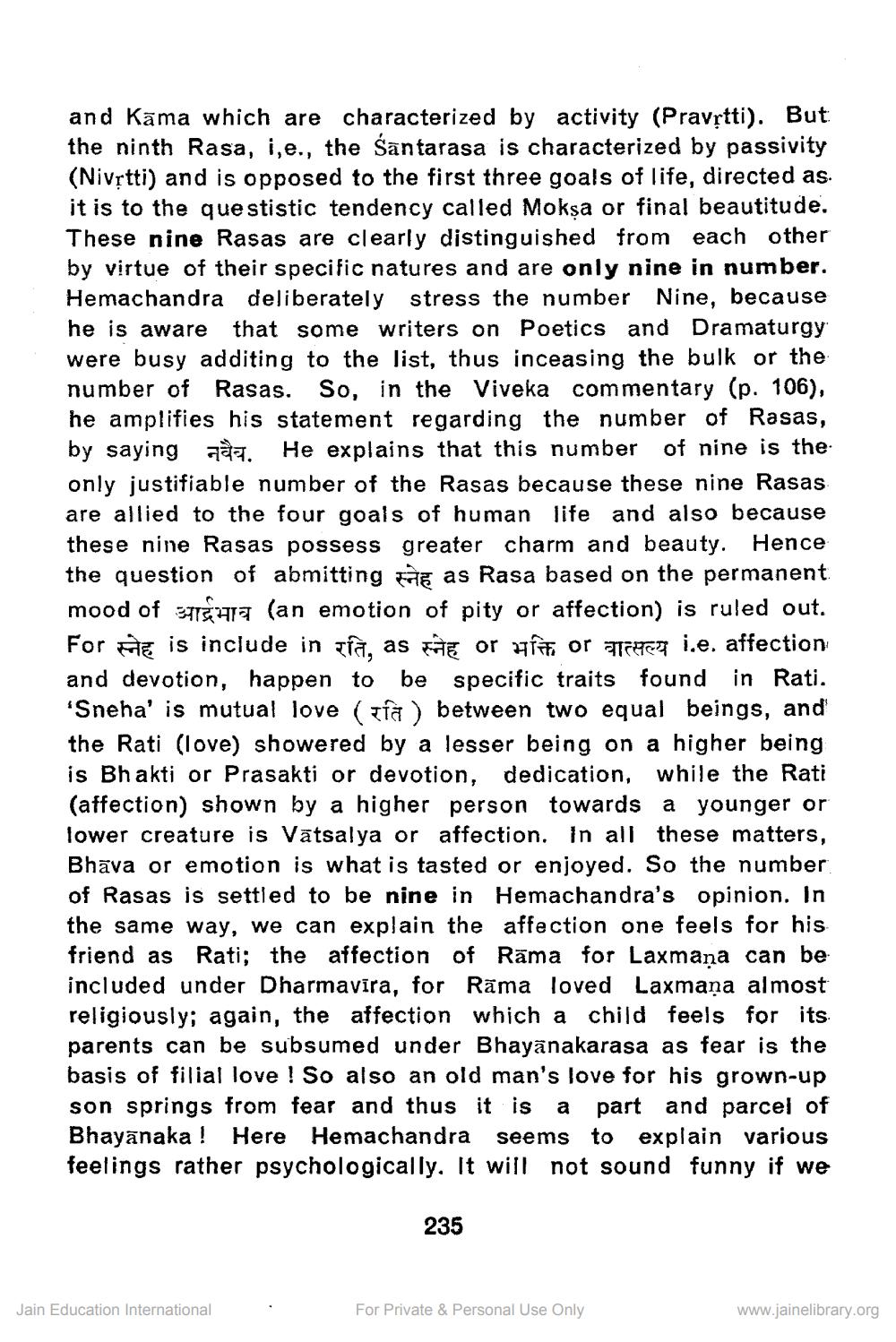________________
and Kāma which are characterized by activity (Pravștti). But the ninth Rasa, i, e., the Santarasa is characterized by passivity (Nivștti) and is opposed to the first three goals of life, directed as. it is to the questistic tendency called Moksa or final beautitude. These nine Rasas are clearly distinguished from each other by virtue of their specific natures and are only nine in number. Hemachandra deliberately stress the number Nine, because he is aware that some writers on Poetics and Dramaturgy were busy additing to the list, thus inceasing the bulk or the number of Rasas. So, in the Viveka commentary (p. 106), he amplifies his statement regarding the number of Rasas, by saying qaa. He explains that this number of nine is the only justifiable number of the Rasas because these nine Rasas are allied to the four goals of human life and also because these nine Rasas possess greater charm and beauty. Hence the question of abmitting Fa as Rasa based on the permanent mood of 3115412 (an emotion of pity or affection) is ruled out. For स्नेह is include in रति, as स्नेह or भक्ति or वात्सल्य i.e. affection and devotion, happen to be specific traits found in Rati. "Sneha' is mutual love (ra) between two equal beings, and the Rati (love) showered by a lesser being on a higher being is Bhakti or Prasakti or devotion, dedication, while the Rati (affection) shown by a higher person towards a younger or lower creature is Vātsalya or affection. In all these matters, Bhāva or emotion is what is tasted or enjoyed. So the number of Rasas is settled to be nine in Hemachandra's opinion. In the same way, we can explain the affection one feels for his friend as Rati; the affection of Rāma for Laxmana can be included under Dharmavira, for Rāma loved Laxmaņa almost religiously; again, the affection which a child feels for its parents can be subsumed under Bhayānakarasa as fear is the basis of filial love ! So also an old man's love for his grown-up son springs from fear and thus it is a part and parcel of Bhayānaka! Here Hemachandra seems to explain various feelings rather psychologically. It will not sound funny if we
235
Jain Education International
For Private & Personal Use Only
www.jainelibrary.org




